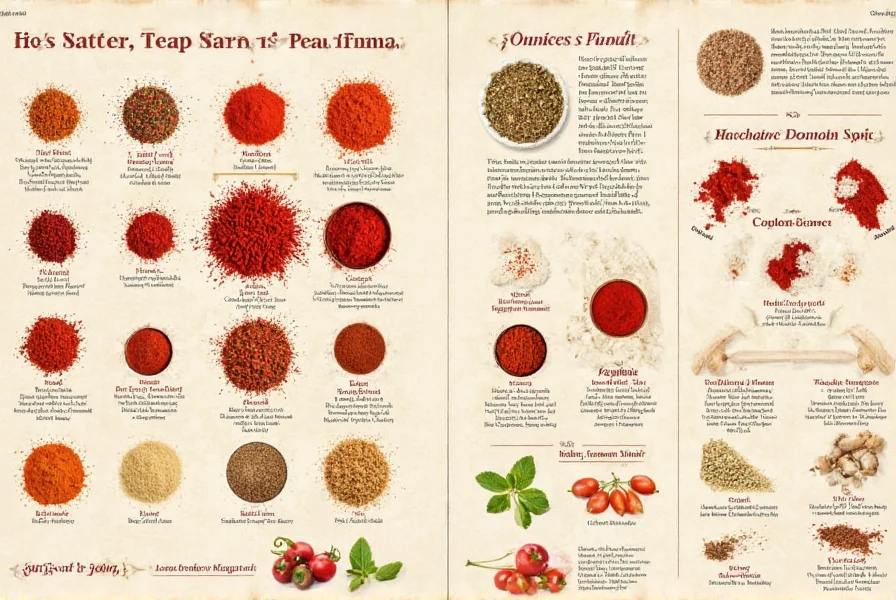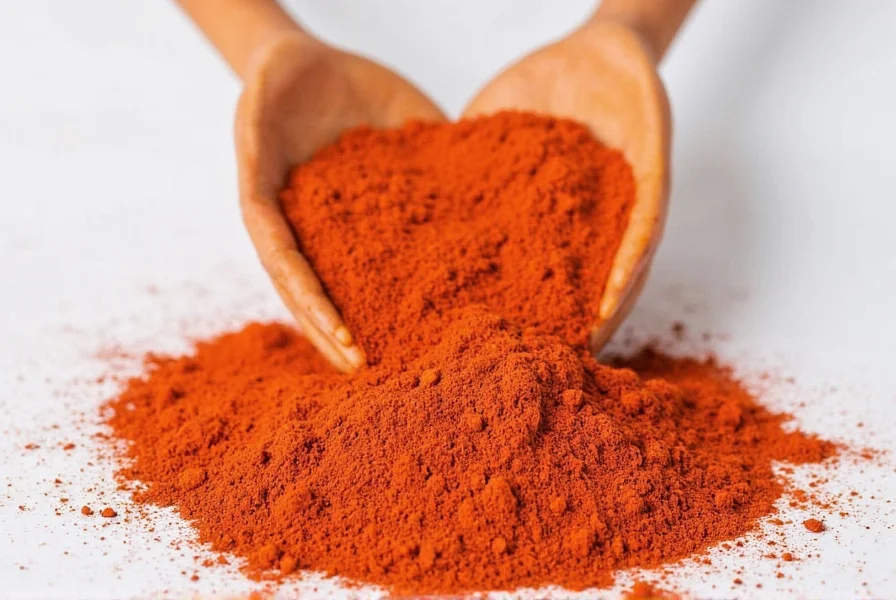Table of Contents
Introduction to Paprika
Paprika tastes primarily sweet and mild for Hungarian varieties, smoky for Spanish pimentón, and spicy for hot paprika. Its base flavor is earthy and pepper-derived, ranging from mellow to intense depending on the variety. This guide explains exactly what paprika tastes like, how to use it, and what to look for when buying.

What Do Paprika Taste Like?
Paprika's flavor profile varies significantly by type. Hungarian paprika offers mild sweetness with subtle fruit notes, Spanish smoked paprika delivers deep woodsy smokiness, and hot paprika provides noticeable heat. The base flavor is earthy and pepper-like, with nuances shaped by processing and origin.
- Sweetness: Hungarian varieties taste like roasted red bell peppers with a delicate sweetness, ideal for goulash and stews.
- Smokiness: Spanish pimentón has rich oak wood smoke notes, perfect for adding depth to grilled meats and roasted vegetables.
- Spiciness: Hot paprika varieties deliver sharp, chili-like heat, suitable for chili, salsa, and spicy marinades.
- Bitterness: Stale or poor-quality paprika may taste bitter; fresh paprika should have a vibrant aroma and no off-flavors.

Different Types of Paprika and Their Flavors
Each paprika type has distinct characteristics for specific culinary uses:
| Type of Paprika | Flavor Profile | Cooking Uses |
|---|---|---|
| Hungarian Paprika | Mild, sweet, slightly fruity | Stews, soups, sauces, and egg dishes |
| Spanish Pimentón (Smoked) | Deep smoky, rich, with oak wood notes | Paella, chorizo, grilled meats, and roasted vegetables |
| Smoked Paprika (General) | Intense smoky, aromatic, varying from mild to hot | BBQ rubs, marinades, and vegetable roasting |
| Hot Paprika | Spicy, sharp, fiery heat | Chili, salsa, spicy marinades, and hot sauces |
| Italian Paprika | Mild, slightly sweet, nutty undertones | Seasoning for meats, seafood, and pasta dishes |
Practical Tips for Using Paprika
Maximize paprika's flavor potential with these expert techniques:
- Start Small: Begin with 1/4 teaspoon and adjust to taste; paprika can be potent.
- Pairing: Sweet paprika complements tomatoes and chicken; smoked paprika enhances grilled meats and roasted vegetables.
- Grind Fresh: For maximum aroma, grind whole dried peppers yourself when possible.
- Storage: Keep in an airtight container away from light and moisture to preserve freshness for up to 2 years.
- Experiment: Try smoked paprika in chocolate desserts or sweet paprika in baked goods for unexpected depth.

Buying Guide: How to Choose the Best Paprika
Selecting quality paprika ensures optimal flavor in your dishes:
Key Features to Consider
- Origin: Hungarian for sweetness, Spanish for smokiness, Mexican for heat.
- Heat Level: Look for clear labels like "sweet," "smoked," or "hot"; avoid vague terms like "regular."
- Color and Aroma: High-quality paprika has vibrant red color and a strong, fresh pepper scent. Dull color or weak smell indicates staleness.
Recommended Products
Top-rated options for different culinary needs:
- Spanish Pimentón de la Vera
- Features: Smoky, rich, certified quality
- Advantages: Authentic Spanish flavor for traditional dishes
- Use Cases: Paella, chorizo, and grilled meats
- Target Audience: Home cooks and chefs specializing in Spanish cuisine
- Suitable Occasions: Dinner parties, holiday meals
- Smoked Paprika by Simply Organic
- Features: All-natural, smoky, free from additives
- Advantages: Adds depth and complexity to any dish
- Use Cases: Rubs, marinades, and roasted vegetables
- Target Audience: Health-conscious individuals and food enthusiasts
- Suitable Occasions: Barbecues, weekend meals, and holiday feasts
- Hungarian Paprika by McCormick
- Features: Mild, sweet, versatile
- Advantages: Perfect for everyday cooking and baking
- Use Cases: Soups, stews, and baked goods
- Target Audience: Everyday home cooks and casual bakers
- Suitable Occasions: Family dinners, potlucks, and weeknight meals

Conclusion
Paprika's flavor varies dramatically by type: Hungarian offers sweet mildness, Spanish smoked delivers rich woodsy notes, and hot varieties provide fiery heat. Its earthy pepper base adapts to countless dishes when used correctly. Understanding these nuances unlocks paprika's full potential in your kitchen.

Frequently Asked Questions (FAQs)
What does paprika taste like overall?
Paprika's flavor varies significantly by type. Hungarian varieties are typically sweet and mild with subtle fruitiness, Spanish smoked paprika delivers deep smokiness, and hot paprika varieties add noticeable heat. The base flavor is earthy and pepper-derived, ranging from mellow to intense depending on processing.
Is all paprika spicy?
No—spiciness depends entirely on the variety. Sweet paprika (like standard Hungarian) has no heat, smoked paprika focuses on smokiness without significant spice, while hot paprika varieties (common in Spanish and Mexican blends) deliver noticeable heat. Always check packaging for "sweet," "mild," or "hot" indicators.
How can I tell if my paprika has gone bad?
Stale paprika loses its vibrant red color (turning dull brown), emits a weak or musty odor instead of a fresh pepper scent, and tastes flat or bitter. Properly stored in an airtight container away from light, it should retain potency for 1-2 years. If it lacks aroma when rubbed between fingers, it's time to replace it.
What's the difference between paprika and chili powder?
Paprika is made solely from ground peppers, while chili powder is a blend of spices (including paprika, cumin, garlic powder, and oregano). Paprika provides pure pepper flavor—sweet, smoky, or hot—whereas chili powder offers a complex, seasoned profile. They're not direct substitutes in recipes.
Can I use sweet paprika instead of smoked paprika?
You can substitute them, but the flavor profile will change significantly. Sweet paprika lacks smokiness, so for dishes relying on that depth (like paella or BBQ rubs), add 1/4 teaspoon liquid smoke per teaspoon of paprika. For non-smoky dishes (like potato salad), sweet paprika works perfectly as a direct replacement.










 浙公网安备
33010002000092号
浙公网安备
33010002000092号 浙B2-20120091-4
浙B2-20120091-4